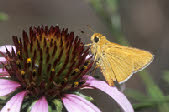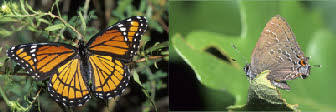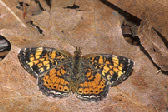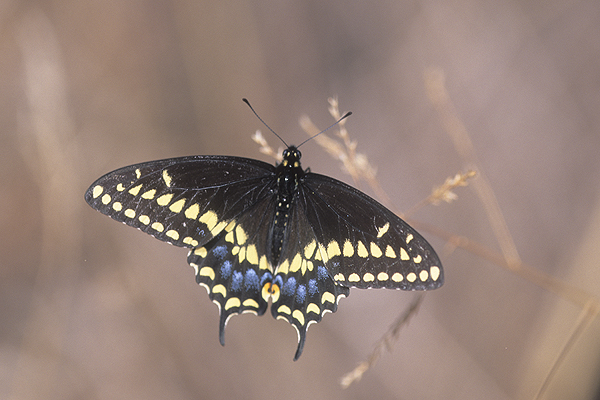The Butterflies of the World Foundation
A Non-





Papilio polyxenes, male, ‘Red Hill,’ Purcell, McClain County, Oklahoma, 5 April 2006
Ref
#: I-
Black Swallowtail
Papilio polyxenes Fabricius, 1775
Subfamily Papilioninae
Tribe Papilionini, Fluted Swallowtails
Taxonomy
There are about 600 species within the family Papilionidae. The family is made up of 3 subfamilies, the Parnassiinae, which has about 50 species of Parnassians and Apollos that are found mostly in the montane regions of the nothern hemisphere, the Baroniinae, which has only 1 species, Baronia brevicomis from western Mexico, and the Papilioninae, which has about 550 species found worldwide. The subfamily Papilioninae is further divided into 4 tribes, the Teinopalpini, which include 2 species from the Himalayas, the Troidini, which has about 130 worldwide species including the birdwings, the Leptocircini, which has about 140 species and includes kite Swallowtails, and the Papilionini, which has over 200 worldwide species and includes the fluted swallowtails in which Papilio polyxenes belongs to.

Papilio polyxenes, female, ‘Red Hill,’ Purcell, McClain County, Oklahoma, 14 March 2006
Ref
#: I-
General Information:
Papilio polyxenes is one of the most recognized butterflies in the United States. It is found throughout the eastern half of the U.S. in open habitats. It is a common garden visitor and can be readily attracted by planting dill or fennel, which are larval food sources. These butterflies are known to be ‘hilltoppers.’ Females are Batesian mimics of the Pipevine Swallowtail, Battus philenor.
Lifecycle:
Larval hostplants include plants in the carrot and parsley family, the common ones being Queen Ann’s Lace, fennel, cultivated carrot, celery, dill and parsley. Immature larvae look like a bird dropping. Larvae have orange eversible organs called osmeteria that are used to chemically deter predators.
All photographs, artwork, text and website design are the property of The Butterflies of the World Foundation (unless otherwise stated) and are protected under national and international copyright laws. Photographs, artwork or text on this website may not be reproduced in any way without prior written consent of The Butterflies of the World Foundation.


Papilio polyxenes, Wichita Mountains National Wildlife Refuge, Comanche County, Oklahoma,
19 July 2010 Ref
#: I-
Papilio polyxenes, Wichita Mountains National Wildlife Refuge, Comanche County, Oklahoma,
19 July 2010 Ref
#: I-

Papilio polyxenes, Wichita Mountains National Wildlife Refuge, Comanche County, Oklahoma,
19 July 2010 Ref
#: I-

Papilio polyxenes, Wichita Mountains National Wildlife Refuge, Comanche County, Oklahoma,
19 July 2010 Ref #:
I-

Papilio polyxenes, Lexington Wildlife Management Area, Cleveland County, Oklahoma,
25 March 2011 Ref
#: I-

Papilio polyxenes, Lexington Wildlife Management Area, Cleveland County, Oklahoma,
25 March 2011 Ref
#: I-

Papilio polyxenes, Lexington Wildlife Management Area, Cleveland County, Oklahoma,
25 March 2011 Ref
#: I-

Prairie Parsley, Polytaenia nuttallii, a common larval food plant, Lexington Wildlife
Management Area, Cleveland County, Oklahoma Ref
#: F-


Papilio polyxenes, Lexington Wildlife Management Area, Cleveland County, Oklahoma,
16 May 2012 Ref
#: I-

Papilio polyxenes, larva on dill, Anethum graveolens, Oklahoma State University Botanical
Garden, Payne County, Oklahoma, 11 July 2012 Ref
#: I-

Papilio polyxenes, larva on dill, Anethum graveolens, Oklahoma State University Botanical
Garden, Payne County, Oklahoma, 11 July 2012 Ref
#: I-

Papilio polyxenes, larva on dill, Anethum graveolens, Oklahoma State University Botanical
Garden, Payne County, Oklahoma, 11 July 2012 Ref #: I-